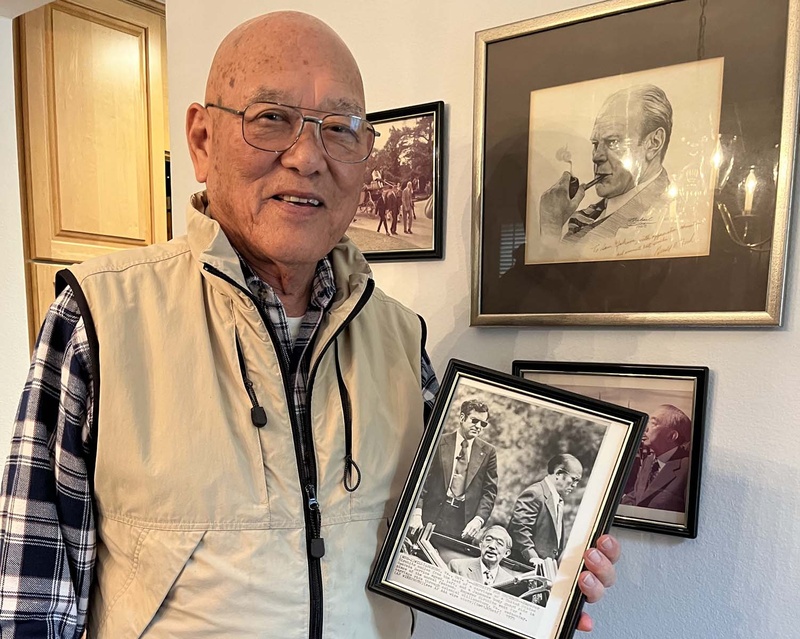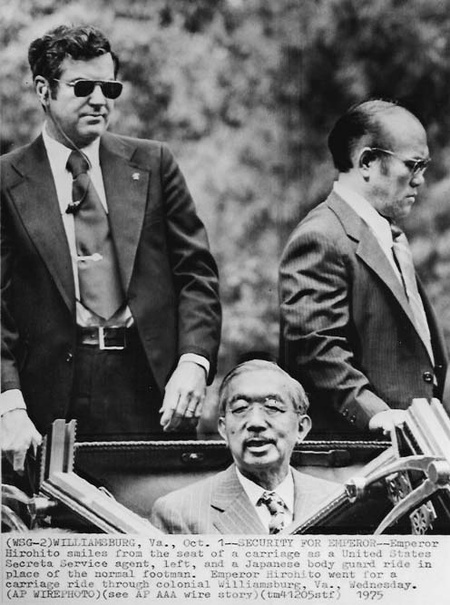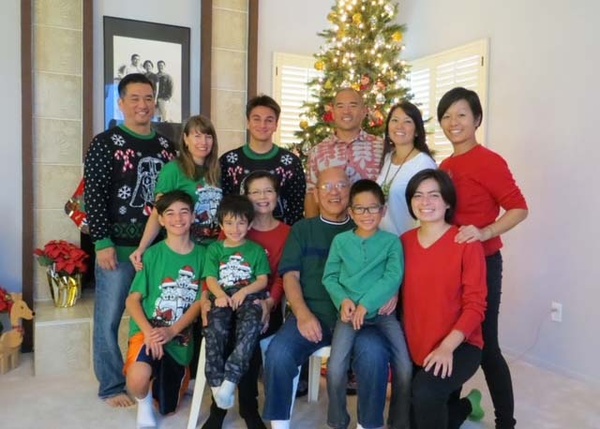Born in 1936 in Los Angeles, California, Kazuo Yakura always dreamed of serving in law enforcement. As a child, he loved playing games of cat and mouse, cops and robbers, hide and seek, or catch me if you can during his family’s incarceration in the Gila River concentration camp in Arizona from 1942 to 1945.
The Yakura family returned to Los Angeles, where Kazuo’s Issei father passed away from colon cancer in 1946. His mother and elder sister worked hard as seamstresses to support the family.
Kazuo remembers, “We faced prejudice after the war. I developed a hatred and distrust of people—towards the Americans for what they did to us Japanese, and towards the Japanese friends who turned their backs on my mother after the death of her husband because of the hard times we were all facing.”
Despite her life’s hardship, Kazuo’s mother, Hisa, set an unwavering goal for her son: He would graduate from college.
While in college, Kazuo left to join the U.S. Army. He was stationed in Korea for two years and then returned to college after his discharge.
Fueled by his ambition to pursue a career in law enforcement, Kazuo majored in Police Administration. His counselors discouraged him from doing so as he did not meet the 5’9” height requirement of most local and Federal law enforcement agencies. Despite this obstacle, Kazuo graduated with a B.S. in Police Administration from California State College, Los Angeles, in 1962.
Prior to his graduation, one of his professors advised him to call Mr. Guy Spaman, Special Agent in Charge of the U.S. Secret Service, Los Angeles Field Office. Advised of the 5’9” height requirement for employment, Kazuo went in for an interview, submitted an application, and took a qualifying examination. The height requirement was subsequently waived.
On March 18, 1963, Kazuo was sworn in as a Special Agent for the U.S. Secret Service. The first agent he met asked him his name. “Yakura,” he replied. The agent responded, “I’m going to call you Sam.” For the rest of his Secret Service career, Kazuo was known as Sam.
He was competitive, courageous, and driven to excel. “I had to prove to myself that I was as good as the other agents. I had a Type A personality and needed action.”
“The Secret Service opened a whole new world to me,” he reminisced. From a background where all his friends were Japanese, spoke Japanese, and ate Japanese food, Kazuo entered an unknown world that was inaccessible to others.
Three months after being hired, Kazuo traveled to Hyannis Port, Massachusetts, to provide security at the Kennedy compound, which included the homes of John F. and Robert F. Kennedy and their father, Ambassador Joseph P. Kennedy Sr.
Later that year, President John F. Kennedy was assassinated in Dallas, Texas. From then on, Kazuo vowed to himself that nothing was going to happen to any protectee on his watch. The painful memory of the Kennedy assassination was indelible. He commented, “Every Special Agent who worked for the Secret Service in 1963 will relive the assassination of President Kennedy in Dallas, Texas, for life.”
The tragedy cast doubt on the future role of the Secret Service. However, the Warren Commission Report, released in 1964, recommended that Congress expand exclusive protection of the President to include the Vice President and family as well as the widows of current and former Presidents. As a result, the responsibilities of the Secret Service grew quickly.
In 1965, Kazuo was transferred to Hawaii to help address the increase in counterfeiting cases emanating from Asia.
Three years later, Kazuo transferred back to Los Angeles. The day after he arrived in Los Angeles, Robert F. Kennedy, who was campaigning for President, was assassinated there. Richard Nixon then issued an Executive Order requiring Secret Service protection of candidates and nominees for the offices of President and Vice President.
Kazuo traveled back and forth to Hawaii to protect the President and Vice President during their meetings with foreign heads of state, including Prime Minister Nguyen Cao Ky of Vietnam. In 1970, a Chinese national attempted to assassinate Chiang Ching-kuo, the son of Chiang Kai-Shek, then president of Taiwan, in New York. President Nixon immediately signed an Executive Order mandating Secret Service protection of all leaders of foreign countries. The Secret Service was also given responsibility to protect Chiang Ching-kuo, the future president of Taiwan, for the duration of his stay in the United States. This action led to Secret Service protection of prime ministers from Canada, Australia, New Zealand, Fiji, and Western Samoa, the King of Tonga, and other foreign leaders who visited Hawaii.
Kazuo also traveled around the world as part of the President Protection Detail for President Richard Nixon. When the plane carrying the Presidential car landed in Romania, the entire detail was detained for an hour because local immigration authorities could not believe that Kazuo was an American citizen. After securing headquarters clearance, everyone deplaned, but his fellow agents joked with him about the incident for years afterwards.
From 1963 through 1985, Kazuo protected six U.S. Presidents: John F. Kennedy, Lyndon B. Johnson, Richard Nixon, Gerald R. Ford, James Carter, and Ronald Reagan.
In the twenty-two years that I was a special agent in the Secret Service, six different individuals were protected as the President of the United States. They were from different political parties and had different ideologies and personalities. I did not protect the person for who they were, I protected the position held by that person. I protected the President of the United States and all others who were provided protection by the United States Secret Service.
I arrested individuals for breaking the law, with the hope of making this nation safe for my family. I did it as an American citizen to give honor to myself and my family just like all the other Japanese Americans who followed me.
Kazuo also protected numerous foreign heads of state and diplomats in Los Angeles, and later in Washington, D.C. He was part of the advance team for dignitaries including the Queen of England, the Queen of Denmark, King Hussein of Jordan, President Marcos of the Philippines, and others. He also performed advance work in the Middle East to support the shuttle diplomacy of former Secretary of State, Dr. Henry Kissinger.
In 1975, Kazuo took on his most memorable protection assignment—protection of the Emperor and Empress of Japan. In a newspaper photo, Jerry Parr was identified as a Secret Service agent, while Kazuo was mistakenly described as a Japanese bodyguard.
At the end of the royal couple’s visit to Honolulu, Hawaii, the Japanese police secured for him an audience with the Empress, for which he was very grateful. His mother was thrilled.
In 1976, Kazuo returned to the Los Angeles Field Office and served as Protection Coordinator and Training Officer until his retirement in 1985. After retiring from the Secret Service, Kazuo served as keynote speaker for the first Secret Service Unity Day held in 2013, and once again in 2017.
As he looked back on his distinguished and groundbreaking career as the first Japanese American U.S. Secret Service Special Agent, Kazuo shared the following perspectives:
I did not feel any race or ethnicity issues while working for the Secret Service. I learned that people from back East were not as prejudiced against the Japanese as the people on the West Coast. Very few Japanese lived back there, and we were no threat to them. Most of them did not even know we were put in camp during WWII.
He also expressed pride in the resilience of Japanese Americans and his Japanese cultural heritage:
During WWII, we were people without a home, thought of as spies. We were not welcomed here in the U.S. nor in Japan, our homeland. We returned from camp to the West Coast and started a new beginning from scratch. We found places to live and jobs. We assimilated into our neighborhood and community, into the American culture and dreams, and now we live as American citizens.
In Japanese culture, you are taught not to disgrace the family name and bring shame to your ancestors. Your behavior has nothing to do with what America did to us, it has to do with you and the kind of person you are. Be Japanese and bring honor to yourself and your family.
Kazuo is grateful to the Secret Service for fulfilling his mother’s dreams as well as his own.
I will always be grateful to the Secret Service for fulfilling my life dream and ambition. It opened the door that all the others kept closed. Not only did the Secret Service do this for me, but it did it for my mother.
It fulfilled her dream and life accomplishment. She saw her son graduate from college and then visited places unseen by her friends and family, including the White House and Arlington Cemetery. She shook hands with the Vice President of the United States and watched her son protect the Emperor and Empress of her homeland, Japan. Serving in the Secret Service helped me to be a success in her eyes.
When asked to evaluate his career with the Secret Service, Kazuo smiled.
I dreamed about being a police officer when I was a six-year-old child playing cops and robbers. When I was 11-12 years old, my favorite TV shows were Dragnet and FBI.
When I was hired by the Secret Service and got my cases, it was like a new game of cops and robbers, hide and seek, or needle in a haystack. I got to play my games until I was 50 years old. I got to travel around the world and see places that were inaccessible to everyone else. I got everything I dreamed for from the best law enforcement agency in the United States.
© 2024 Teri Lim








